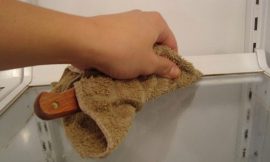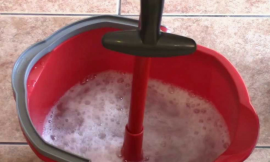
Did you know that nearly 70% of homeowners report dealing with mold issues in their washing machines? It’s time to tackle this often-overlooked problem! High-efficiency washing machines are a game-changer for saving water and energy, but their design can sometimes trap moisture, creating the perfect breeding ground for mold. In this guide, I’ll walk you through effective strategies to prevent mold growth in your washing machine, helping you keep your laundry fresh and clean. Let’s roll up our sleeves and dive into the world of mold prevention—your clothes will thank you!
Understanding Mold: What It Is and Why It Grows
Mold is a type of fungus that thrives in damp, warm environments. It can appear in various forms, such as black, green, or white spots, and there are several common types you'll often encounter, including Cladosporium, Aspergillus, and Penicillium. Washing machines are particularly susceptible to mold growth due to the damp conditions they create.
Certain conditions inside your washing machine promote mold growth. For example, leaving wet laundry in the machine for extended periods encourages mold spores to flourish. Additionally, the residual moisture left behind after a wash cycle can create a perfect breeding ground, especially in the rubber seals and detergent drawers.
Recognizing the signs of mold presence in your machine is critical. If you smell a musty odor, notice visible mold spots, or see discoloration, it’s time to take action.
Best Practices to Prevent Mold Growth
One of the simplest ways to prevent mold in your washing machine is by loading it properly. Avoid overloading your machine, as it can restrict airflow and keep moisture trapped inside. Instead, allow enough space for clothes to tumble freely.
Using the right detergent is also essential. Some detergents can leave behind residue that fosters mold growth. Opt for high-efficiency (HE) detergents, as they are designed for low water usage and minimize buildup.
Choosing the correct wash cycle can help minimize moisture retention. Consider using a longer spin cycle to effectively remove water from your clothes, reducing the dampness that fosters mold growth.
Regular Maintenance Tips for a Mold-Free Machine
To keep your washing machine clean and mold-free, regular cleaning is essential. Aim to clean your machine at least once a month, or more often if you frequently wash heavy or damp items.
Cleaning involves several steps. Start by wiping down the drum, using a cloth soaked in a mixture of vinegar and water to remove any residues. Next, don’t forget to clean the detergent drawer, as soap buildup can attract mold. Lastly, the rubber seal is often overlooked but can harbor mold, so be sure to scrub it thoroughly.
When it comes to cleaning agents, you have options. Commercial mold removers can be effective, but you can also create your own DIY solution by mixing equal parts vinegar and water for natural cleaning.
Smart Usage Habits to Enforce Mold Prevention
Establishing smart usage habits is key to preventing mold. One crucial practice is to wash laundry regularly and avoid letting it sit in the machine.
Ideal load sizes matter as well. Washing smaller loads allows for better drying and gives your clothes more space to move and dry properly, further reducing mold risk.
Another critical habit is leaving the washing machine door open after completing a cycle. This allows airflow, which can help dry out any lingering moisture.
To further support mold prevention, dry your clothes immediately after washing. Leaving wet clothes in the machine increases the chance of mold growth.
Dealing with Existing Mold: Cleaning and Removal
If you've discovered mold in your washing machine, recognizing and treating infestations quickly is essential. Start by checking the areas most prone to mold, such as the rubber seal and detergent drawer.
For mold removal, a combination of vinegar and baking soda can be effective. Applying this mixture to the affected areas can help eliminate mold spores. Alternatively, commercial mold removers formulated specifically for washing machines can also do the trick.
To deep clean your machine and restore freshness, run a hot water cycle with a cup of vinegar added to the drum. Rinse and repeat as necessary to ensure all mold is eradicated. This routine not only helps clear up existing mold but also reduces the chance of it returning.
Conclusion
Keeping your high-efficiency washing machine mold-free doesn’t have to be a daunting task! By implementing simple and effective strategies, you can maintain a fresh and clean laundry experience. From understanding mold to adopting smart usage habits, each step brings you closer to a mold-free machine! So, why wait? Start your cleaning routine today and enjoy cleaner, fresher laundry every time! For more tips and tricks on home maintenance, feel free to explore our other resources!







